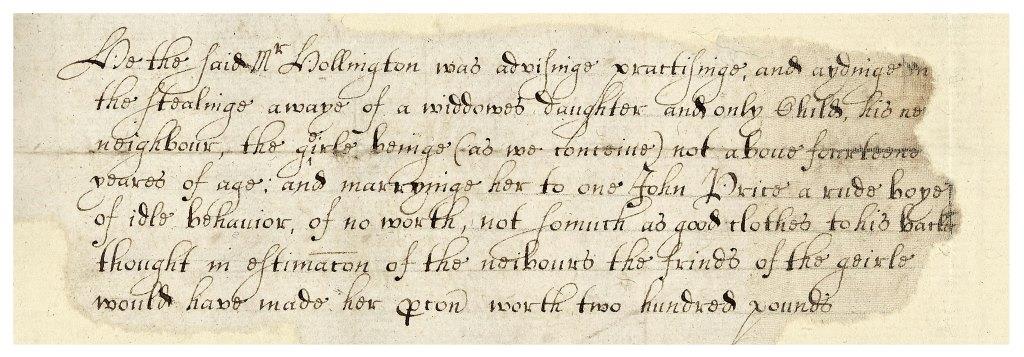William Hollington, the naughty vicar
- 18th November 2018
Drinking, fighting and behaving badly with the neighbours’ wives – this was no local layabout accused of causing trouble around the village of Alvechurch in 1642, it was their vicar.

| ‘That the said William Hollington is usual[ly] a frequenter of alehouses where he spends much time both day and night as well on the Sabbath as weekdays in idle and riotous company in excessive drinking and is a causer of much drunkenness…’. So began a long list of misbehaviour for which William Hollington stood accused by John Waring, Constable of. Alvechurch, in 1642. It is not unusual to find such cases appearing in the court records, far from it, but in this case the accused was the local clergyman!
The Quarter Sessions court papers provide us with a fascinating glimpse into village life in the 17th century, when local quarrels and ill feeling often spilled over into accusations being made to the court. The list of William’s alleged misbehaviour was particularly long however and included reports that he frequented houses suspected for lewdness and was often accompanied with ‘a dangerous and armed Papist of idle behaviour’ with whom he got very drunk. He did not need to go out to behave badly though, as he often drew …’idle company to his own house when they have sent for much ale and there abusively have spent it in drunkenness quarrelling and fighting…’
His alleged behaviour towards the women in the village was not good; he misbehaved with his neighbours’ wives and was accused of ‘…aiding in stealing away a widow’s daughter…the girl being not above fourteen years of age and marrying her to one John Price a rude boy of idle behaviour …’ Unfortunately, the women of the village appear to have had just as much trouble with the previous clergyman. In the complaint against Hollington, ‘…one of them has confessed he did attempt her chastity affirming him to be as bad as Bankes his predecessor who to prevent punishment for his unchaste and incestuous living ran away.’
The list went on to accuse Hollington of being ‘…a curser and a swearer and a notorious liar…’ and that he ‘…counselled with the old Churchwarden to the detaining of goods and money due to the Church and has threatened any that doth question it.’
A portion of the list addressed Hollington’s sympathies for Catholics; ‘The said Hollington has never been heard to put up one prayer either for the Parliament or the distressed Protestants in Ireland…’ and he had been heard to say that ‘…the Papists were not rebels there but honester men than any Protestants…’ It is likely the political and religious unrest of the time played a part the case coming to court. Certainly it was the view of J. W. Willis Bund in his Calendar of Quarter Sessions Records that Hollington was a Royalist in a Puritan stronghold and treated as such. Whatever the truth, it is likely his behaviour only served to strengthen any Puritan ideals his congregation held!
|


Post a Comment